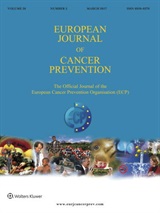Urinary levels of organophosphate pesticides and predictors of exposure in pre-school and school children living in agricultural and urban communities from south Spain
Background. Despite the widespread use of organophosphate (OP) pesticides, information on predictors of children’s exposure to such pesticides is scarce. Objective. To assess exposure to OP pesticides in children 3-11 year-old living in agricultural communities and urban areas from Andalusia (Southern Spain), and to identify the main determinants of exposure. Methods. A longitudinal study was…












